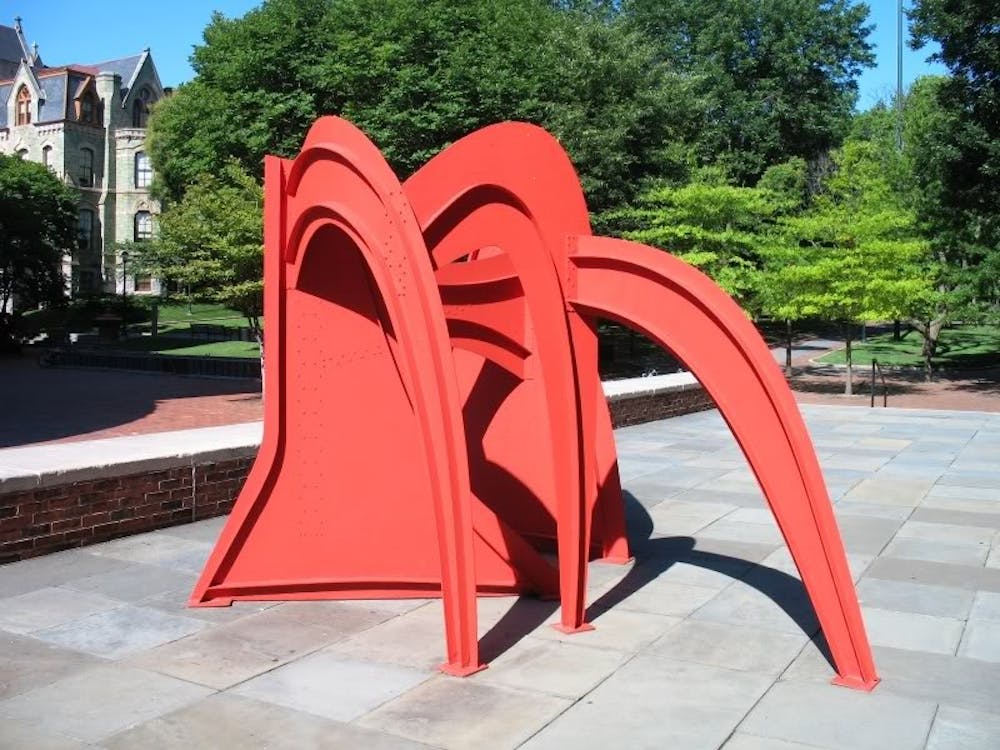Penn has been home to the inventors of MeepMe, bifocals and the toast zambini. Celebrated on campus–wide plaques and emphasized on prospective student tours, these innovators often outshine a very crucial other: the inventor of the mobile. Though he didn’t go to Penn, Alexander Calder has left a vibrant mark of avant–garde construction on our campus. Calder’s grandfather created the enormous bronze William Penn atop City Hall. His father designed the Swann Memorial Fountain at Logan Square. And in 1976, Calder continued the family legacy with orange–red Jerusalem Stabile, a sculpture that sits in front of Meyerson Hall. Famous for his suspended structures, delicately hanging in galleries and shifting with the air currents, the artist altered his vision for this piece. The term ‘stabile’ was coined by Calder’s friend and fellow artist Jean Arp. “You have to walk around a stabile or through it — a mobile dances in front of you,” Calder famously said. While Calder’s mobiles allow for movement, his painted steel stables are bolted into place. Striking as it is, Jerusalem Stabile is a model for another work three times bigger: Homage to Jersualem, Stabile, installed on Mount Herzi, Israel in 1977. Both frame their surroundings with large loops and arching beams. There is no better place for Calder’s sculpture than the School for Art and Design. But next time, can’t Israel take the model? We want the 72–foot version.
Check out past Campus Gems here.







